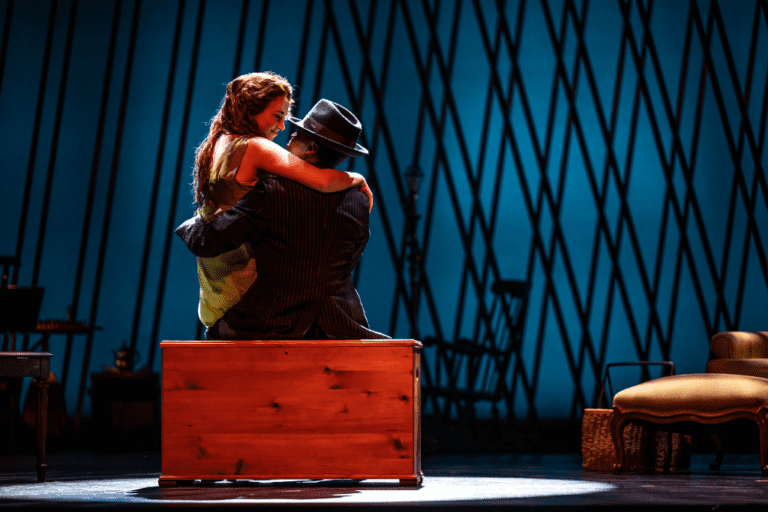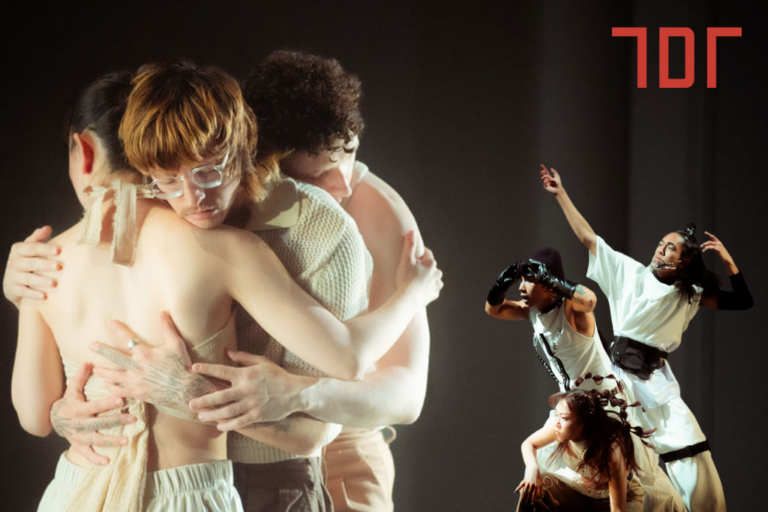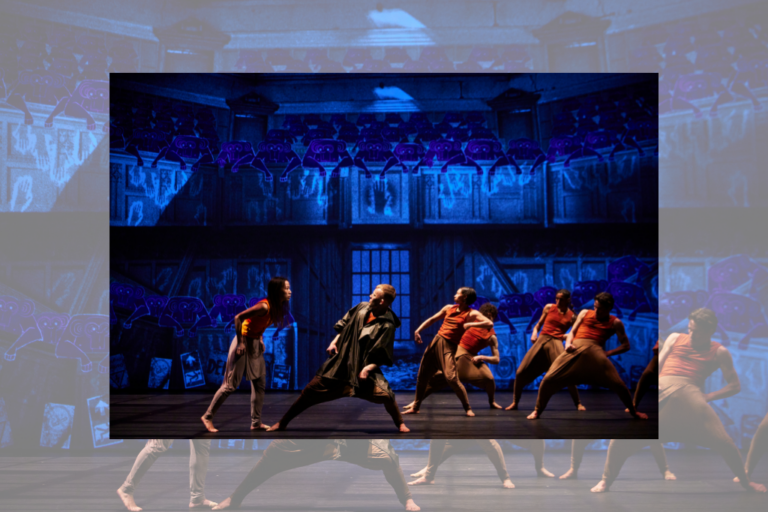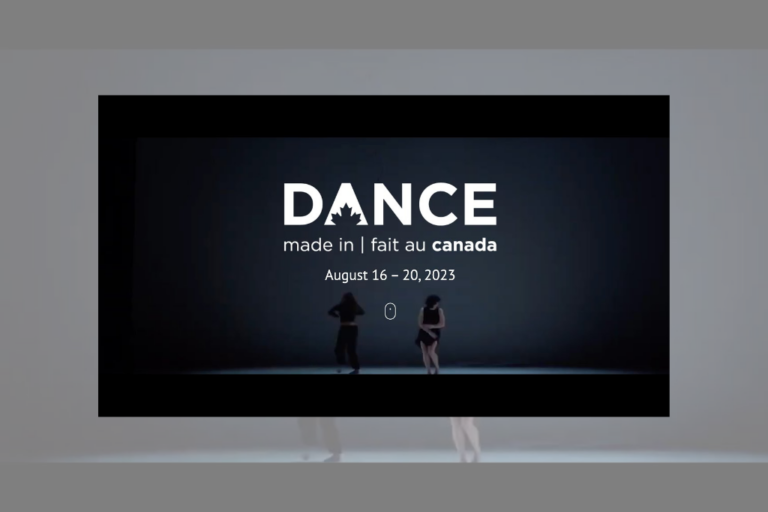What Dance Can Learn From Theatre
“You study theatre? I can see it.”
Yes, yes I do study theatre. Perhaps people can see it because in my (short) career as a dancer and choreographer, I have been enamoured with an embodied “hyper-theatricality.” Can you see it now? Overly-exaggerated facial expressions and extreme physical embodiment emanating from an unrestrained emotionality: these elements have come to define my dance work. I can’t discredit the queer-coding behind these sorts of statements; to be fair, my grown-out highlights and over-articulated hand gestures probably don’t help. Regardless: yes, I am a theatre scholar. Stick around me for longer than a first impression though, and you’ll come to realise that I’m a theatre scholar in name only.
Studying at the University of Toronto, I’m experiencing the black sheep benefits and drawbacks of being a dance-focused performance scholar. The moments where this expertise is referred to and relied upon allow me to counteract the many gaps in my theatre knowledge. I even started joking to my colleagues that the purpose of performance studies is to teach theatre kids what dance is. Yet I often find myself stealing brief moments to quietly Google devised theatre, verbatim theatre, and yes, even Sarah Kane, attempting to assemble some sort of knowledge about dramatic theatre history and performance.
So why have I chosen this path? While I’ll be the first to admit that my dance expertise has tethered me in a sometimes whirlwind graduate school experience, I can still understand any confusion people approach me with. Why put myself through the motions of a theatrical discourse that doesn’t directly serve me?
A good place to start answering this question is with an (outdated) study on the performing arts done by the United States government in 1966. W.J. Baumol and W.G. Bowen, economists hired by Congress, state that “dancers are in even worse financial circumstances” than those of working actors. The report concludes that “the minimum weekly salary for Off-Broadway actors was $45 a week”; in comparison, they note that there is “a leading modern dance company whose members receive $25 after a [weeklong] trip.” This is to say: actors have it bad, but generally, dancers have it a bit worse.
This wage dynamic remains much the same in the contemporary performance world. However, low salaries are only the tip of a much more insidious iceberg for the working dancers of 2022. It’s true that union status as a working actor is difficult to come by (and less than a guarantee of work), but the very presence of a union is more than dance performers have to aspire to. While the acting industry’s role in 2018’s #MeToo movement was a sobering and visceral upheaval against workplace sexual misconduct, the dance world’s reckoning did not reach peak fervor until COVID-19 disbanded abuser-held spaces. While theatre processes are an amalgam of dramaturges, company managers, and (oft-ineffective) human resources for victim support, dance solely employs choreographers and dancers, creating a stratified power binary the likes of which I have yet to find comparable precedent for.
This is all to say that even though the contemporary theatre industry is far from perfect, the ethical issues synonymous with dance performance are dire. Dance and theatre suffer from the same issues: so why and how has this gap formed?
The discourse of theatre as a practice where the performance is the exception is far more developed than in dance.
Dance is different from theatre because there is a lack of precedent for change in the industry. The same institutional, pedagogical, and spectatorial practices of Baumol and Bowen’s time remain prominent today, completely unchanged. One only needs to look at the almost exclusively small-statured and overwhelmingly white rosters of dance companies big and small as evidence. And any theatre worker can probably relate to the issues facing working dancers: the “everyone is replaceable” atmosphere that permeates dance work, the fear of standing up against unfair treatment. A romanticism of exhaustion and financial precarity. Blurred lines of consent through outdated teaching and rehearsal methods.
So, taking this all into account, what are the metaphysical differences between theatre and dance? Theatre is translucent, while dance is opaque. Dancers are supposed to be what Martha Graham called the “athletes of god.” They are transcendent beings, capable of embodying the liminal space between heaven and earth, possessing a mastery of their body so profound that it’s like they’re exiting it.
To accomplish this other-worldliness, dance institutions have become notoriously particular about the materials they present and share. Spectators subsequently lack the agency to hold these institutions accountable for anything past their public performances. Rarely does the outside world see anything messy, in-progress, or administrative; to reveal the process is to shatter the performer’s enigma, putting dancers at odds with the air they are supposed to inhabit.
However, theatre, more often than not, is presenting people as people. Exceptions abound, but most theatre pieces are not combatting the humanity of its performers. Even as the boundaries between all forms of performance continue to blur, I never doubt the fundamental, spiritual humanity of theatrical endeavours, that I am being presented with a character instead of a force or entity.
Dance should be understood, and understand itself, to be a practice where the performance is the exception. Dance is a daily commitment to training technical proficiency onto our imperfect bodies. Anything a dancer performs is the product of years of toning their instrument, much more a facet of their life than the phenomenal fraction that performance takes up. Yet the histories and theories about dance (at least the canonical sources) tend to focus on these performances, relatively small fractions of a dancer’s life. With a re-imagination of dance lying in the hands of established dance institutions, our agency as dancers, practitioners, and dreamers is to petition for more clarity and communication about their practices. This act of sharing is a commitment to accountability, an acknowledgement that change will happen when an institution’s practices strikes the wrong chord. Only then can we start to adequately diminish the most severe of grooming, gatekeeping, and assaulting practices.
The discourse of theatre as a practice where the performance is the exception is far more developed than in dance. The foundation of theatre arises from its discussion of methods. The fundamental work of rehearsal, reflection, critique, and scholarship of Stanislavsky, Brecht, Grotowski, Fuchs, and Lori-Parks have advanced the practice and scholarship of performance by stressing process over product. It has been this continuously evolving discourse that has pushed the form forward throughout the 20th century, with ground-breaking performances emanating from these new discourses into method.
Discussing method in such depth is non-existent in Western dance; while our training techniques have evolved over time, how we execute rehearsals and performances has not. It is here that I see a synonymous gap between theatre and dance to that of the current state of work precarity. Except now, the way forward can occur with small shifts in the way dancers have imagined themselves. A small revolution that feels manageable enough for myself and others to take on.
I see a way to use theatrical methods to push dance practice forward, to create the change that must occur for workplace misconduct to subside. I want to continue to immerse myself in flourishing and evolving discourses in the theatre sphere, learning from them and bringing them back to the dance communities that I know best. This is already a way of life that has given me new ideas and platforms to address the issues of my own community.
To all my theatre-adjacent readers and to those who resonated with any of these issues, my message is simple:
Keep pursuing change in the avenues you have chosen. The people you inspire are many, whether near or dancing somewhere off in the distance.














Comments